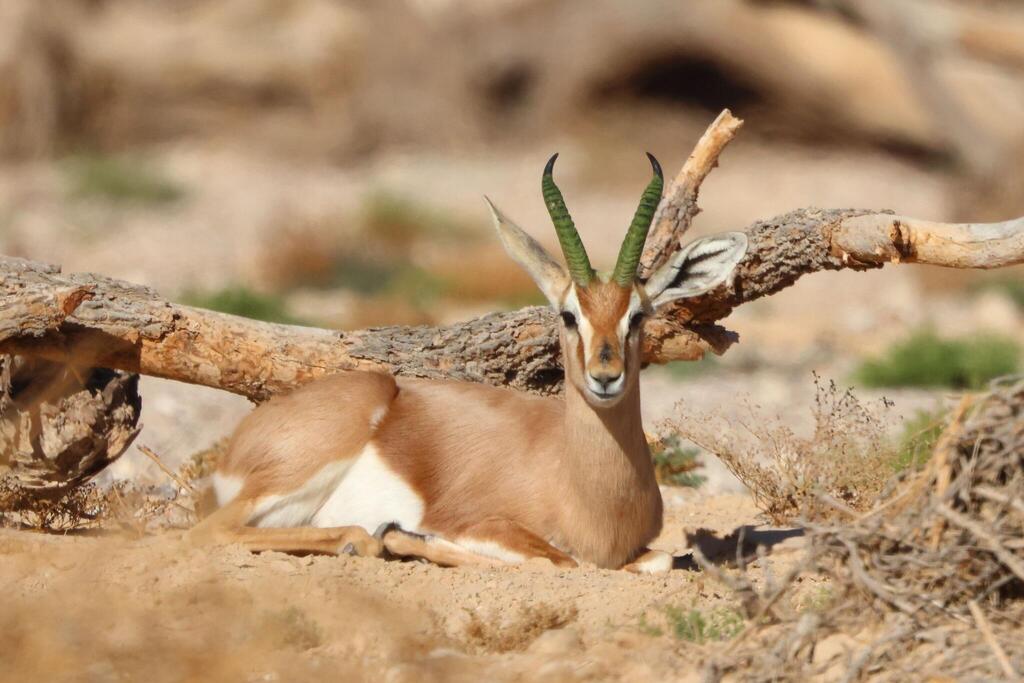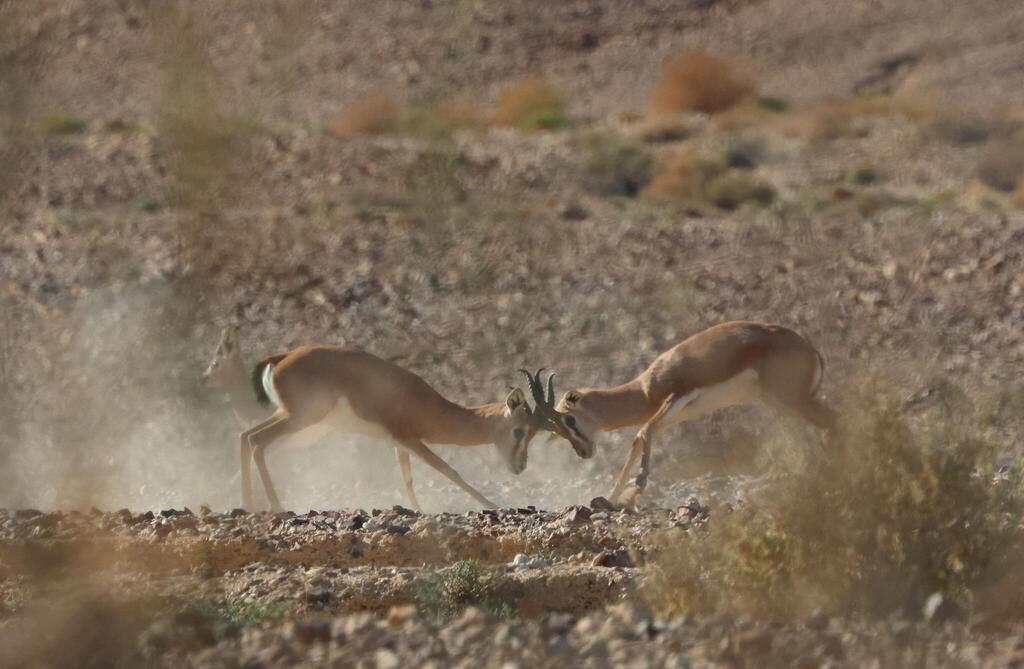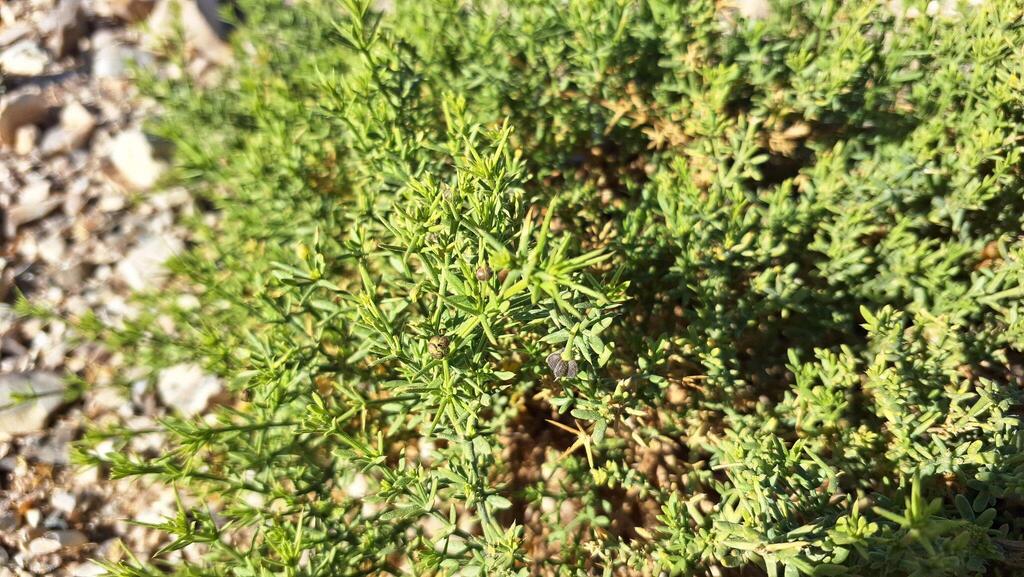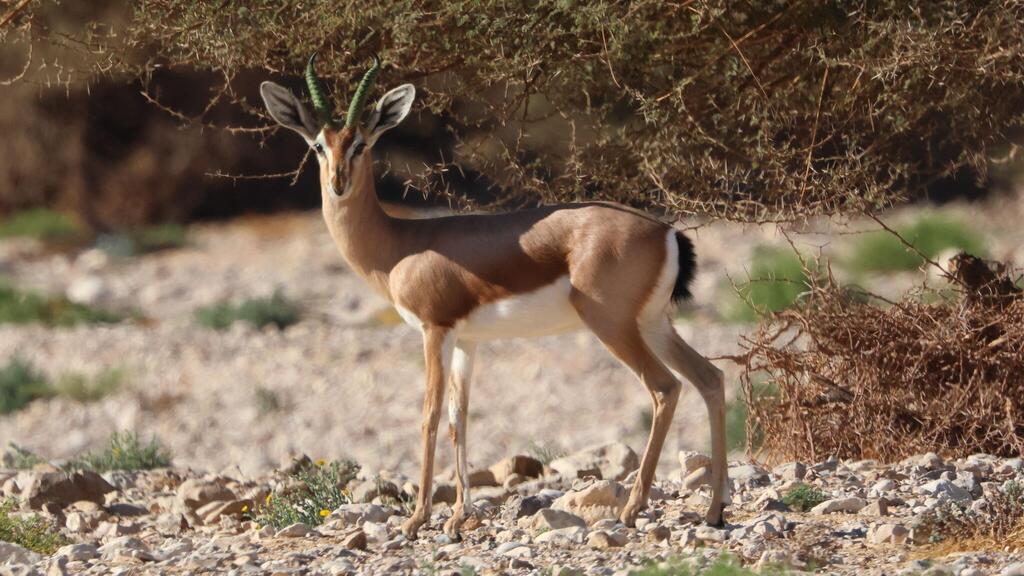Getting your Trinity Audio player ready...
Amir Balaban from the Society for the Protection of Nature in Israel documented a rare sighting of a green-antlered Dorcas gazelle in the Ketura Nature Reserve located in the southern Negev.
More stories:
During Balaban's tour of the reserve, he noticed a male gazelle that stood out remarkably. "It was possible to see that he was special even from a distance, and suddenly I noticed his antlers were colored green, which is very unusual," he said. "I saw that he occasionally approached some shrubs and butted them with his antlers."
4 View gallery


The rare gazelle
(Photo: Amir Balaban, Society for the Protection of Nature in Israel)
Balaban explained how the animal’s antlers turned into the verdant shade. "When I approached to check the shrub, it turned out to be Fagonia arabica, a common plant found in desert wadis, which has a beautiful purple bloom in the spring. I rubbed some of its leaves against my fingers and felt how moist it was, and it exactly matched the color that coated the gazelle’s antlers."
4 View gallery


Gazelles duelling in the Negev
(Photo: Amir Balaban, Society for the Protection of Nature in Israel)
The Society for the Protection of Nature in Israel noted that the Dorcas gazelle is found in the desert and is smaller than the more common gazelle found in Israel, with a sandy-red hue to its fur. One of the animal’s distinctive features is its adaptation to desert life without the need for drinking water, as it obtains the necessary fluids from the plants it consumes.
4 View gallery


Fagonia arabica
(Photo: Amir Balaban, Society for the Protection of Nature in Israel)
Adult males mark the streams with piles of dung and urine, while females move within the territory in small herds. Until the 1960s, the Dorcas gazelle population suffered from severe poaching, which greatly affected it, and initiated a move to announce it as an endangered wild species.
"I followed the green-tinted male for almost 20 minutes while he stood, patrolling the streambed, and driving away any other male who tried to approach. I noticed that their antlers also had a greenish hue, but not like the male's antlers which could be seen well from a distance,” Balaban added.
“Green antlers aren’t a sign of inexperience; quite the opposite - the greener they are, the bigger and stronger the male is, and he has time to invest in his looks. Anyone who approaches his stream knows he's getting into trouble.”


